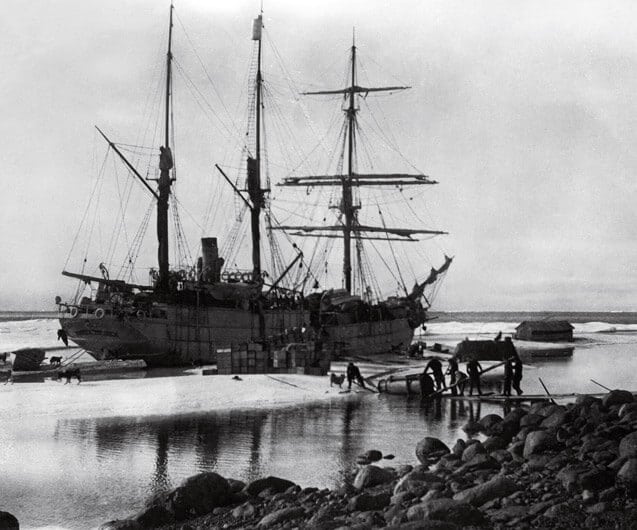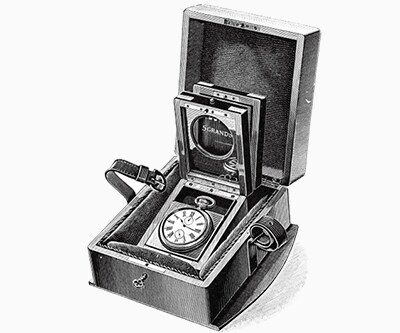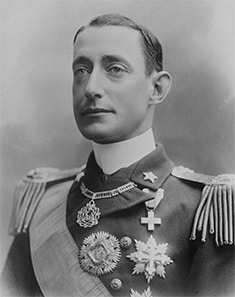

In 1899, Longines chronometers were able to resist the extreme conditions of the Arctic.
Longines chronometer
1873-1933
Louis-Amédée de Savoie, Duke of Abruzzo, was one of the first explorers to use Longines chronometers during his exploration of the North Pole in 1899. He took six Longines pocket chronometers set to –20° C (–4° F) with him. His ship, the Stella Polare, dropped its anchor in the autumn of 1899 in Teplitz Bay on the western coast of Prince Rudolf Land, the northernmost point of the eighty-five islands in the Franz Josef Land Archipelago discovered 26 years earlier by some daring Austrians. Starting from their winter camp at 81° 47’ latitude N, the group of men tried to reach the North Pole with sled dogs.
They calculated their position each day using their Longines chronometers. Slowed down by the wind and chaotic conditions of the Arctic Ocean ice and fearful of running out of food, they resigned themselves to turning back. They then reached 86° 34’ latitude N, 236 miles (380 km) from the pole. After 104 days spent freezing on the ice, they finally managed to find their ship and return to Norway with a hull weakened by countless bumps against the ice. Sometimes the challenge is just to stay alive…

